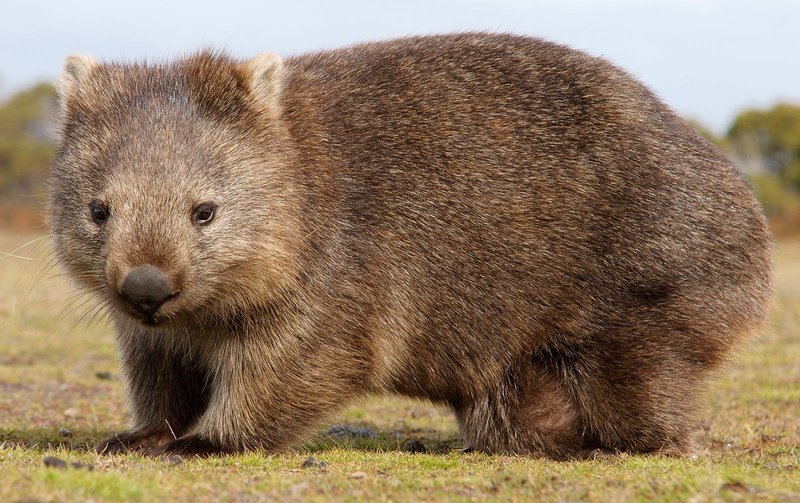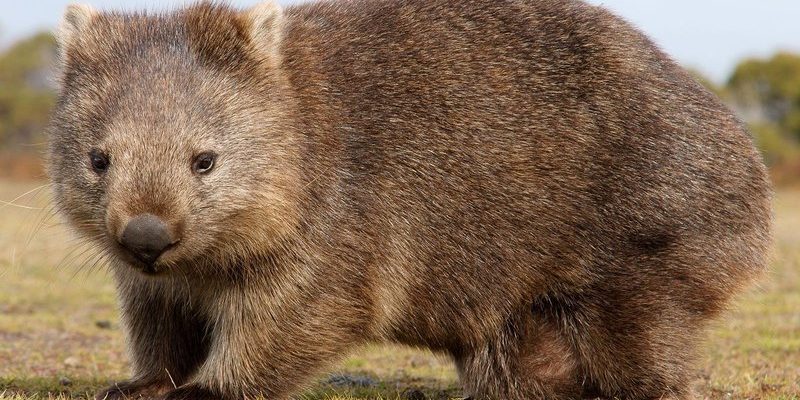
So, grab your coffee, and let’s dive into the wonderful world of wombats. We’ll uncover the facts, clear the air on these adorable burrowers, and debunk some persistent myths that just won’t go away. By the end, you might find yourself appreciating these creatures even more.
Myth 1: Wombats Are Just Like Large Rodents
One common misconception is that wombats are just oversized rodents. Honestly, that’s a bit of a stretch! While it’s easy to lump all furry creatures together, wombats actually belong to the marsupial family, which means they’re more closely related to kangaroos and koalas than to rats or mice.
To help illustrate this, consider how we view animals with similar features but different lineages. Just like how bats and birds both have wings but belong to entirely different animal classes, wombats and rodents diverge at a deeper biological level. Wombats have unique traits, such as their backward-facing pouch, which protects their young while they dig burrows.
A Look at Their Habitat
Wombats are primarily found in Australia and Tasmania, thriving in various environments from forests to grasslands. They spend most of their lives underground in intricate burrow systems, which can be quite extensive. A single wombat can dig a burrow that stretches up to 100 meters! So, while they may look cute and cuddly, their behavior and biology tell a different story.
Myth 2: All Wombats Are Nocturnal
You might be wondering if wombats do all their activities under the cover of darkness. This one’s a little tricky. While many wombats are largely nocturnal, some species, like the common wombat, can be active during the day as well. They tend to be crepuscular, meaning they’re most active during dawn and dusk.
Why does this matter? Understanding their activity patterns can help when you’re trying to spot them in the wild. So, if you’re heading out for a sunset hike, keep your eyes peeled—you might just catch a glimpse of one!
The Impact of Habitat on Behavior
Their behavior can vary depending on their environment and the availability of food. In areas where human activity has disrupted their natural habitat, wombats may adapt to different patterns of activity to avoid dangers. By knowing that they aren’t strictly nocturnal, you can appreciate how adaptable and resilient these creatures are.
Myth 3: Wombats Are Aggressive
Another myth that circulates is that wombats can be aggressive or dangerous. Here’s the thing: while wombats can defend themselves, they’re generally quite shy creatures. When confronted by humans or larger predators, they often prefer to escape rather than engage.
In fact, wombats are known for their distinct behavior when threatened. They’ll find a burrow to hide in or use their strong back legs to kick as a last resort. So, while they might look formidable, they’re usually more interested in finding a quiet spot to munch on some grass.
Understanding Their Defensive Mechanisms
It’s important to respect a wombat’s space. Approaching too closely or cornering one can lead to defensive behavior, but that’s true for most wild animals. Creating a peaceful environment for them allows everyone to coexist without conflict.
Myth 4: Wombats Are Just Big, Furry Balls
If you’ve ever seen a wombat in a photo, you might think they’re just big, furry balls of cuteness! While they do have a rounded, stout body that’s undeniably endearing, there’s more to them than that simple appearance. Wombats have strong legs designed for digging, which gives them a solid, muscular build.
Their physical structure isn’t just for show; it’s essential for survival. Wombats are natural diggers, and their bodies are perfectly equipped for burrowing into the earth, whether for shelter or to seek out food.
Wombat Diet and Lifestyle
Speaking of food, wombats are herbivores, primarily munching on grasses, roots, and shrubs. Their unique digestive system allows them to extract nutrients efficiently from tough plant materials. It’s a far cry from the cute, fuzzy images we often associate them with!
Myth 5: Wombats Are Easily Domesticated
You might think that because wombats are so adorable, they’d make great pets. However, that couldn’t be further from the truth. Wombats are wild animals, and their instincts and needs simply can’t be met in a domestic setting.
For starters, they require a diet specific to their natural habitat, which is difficult to replicate in a home environment. Plus, their burrowing habits and space requirements make them far from ideal pets. Wombats are happiest when they’re allowed to roam and dig in their natural surroundings.
The Case for Wildlife Conservation
Instead of trying to domesticate wombats, consider supporting wildlife conservation efforts. Protecting their habitats ensures they continue to thrive in the wild. Understanding and appreciating these creatures in their natural environment is the best way to enjoy their charm.
Myth 6: Wombat Poop Is Just Ordinary
You might think that all animal poop is pretty much the same, but wombat poop has a distinctive twist. Yes, I’m serious! Wombats produce cube-shaped droppings, which is unique among mammals. This peculiar shape helps keep their poop from rolling away—an important feature for marking territory.
Their cube-shaped scat has even captured the interest of scientists, leading to studies on how and why it forms that way. So next time you think of wombats, remember their poop is as fascinating as the animals themselves!
Why This Matters
Understanding wombat poop isn’t just a quirky fact; it highlights their role in the ecosystem. By marking their territory, wombats help distribute seeds and nutrients throughout their environment, contributing to healthy biodiversity.
Wombats are truly remarkable creatures, and demystifying the myths surrounding them gives us a deeper appreciation for their unique nature. By understanding the facts, we can better respect their habitats and support efforts to protect them.
So, the next time you hear someone say wombats are just oversized rodents or that they’re aggressive, you’ll be ready to set the record straight. Embrace the charm of these fascinating marsupials, and let’s keep the conversation about them grounded in reality!

